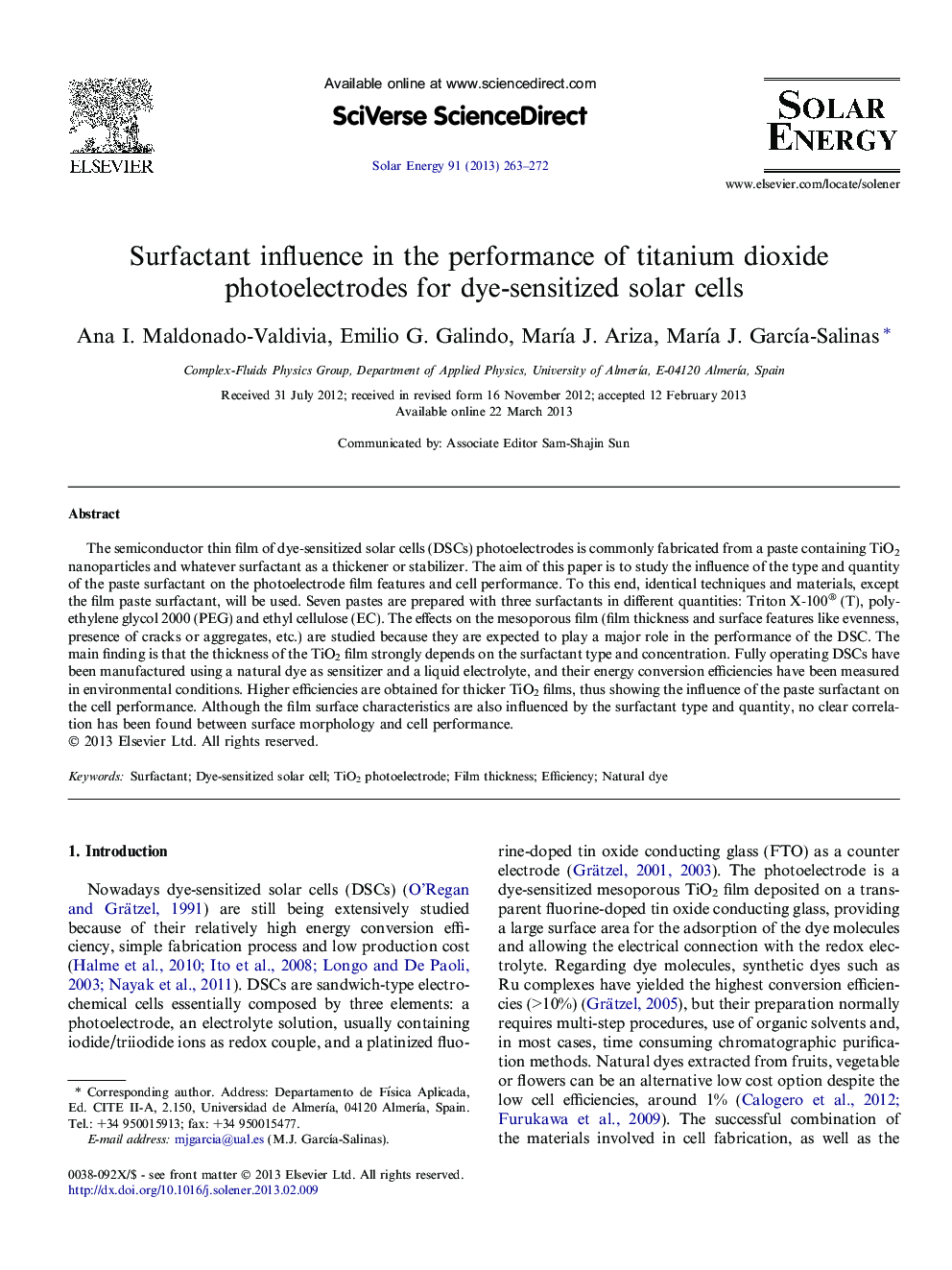| کد مقاله | کد نشریه | سال انتشار | مقاله انگلیسی | نسخه تمام متن |
|---|---|---|---|---|
| 1550415 | 1513126 | 2013 | 10 صفحه PDF | دانلود رایگان |

The semiconductor thin film of dye-sensitized solar cells (DSCs) photoelectrodes is commonly fabricated from a paste containing TiO2 nanoparticles and whatever surfactant as a thickener or stabilizer. The aim of this paper is to study the influence of the type and quantity of the paste surfactant on the photoelectrode film features and cell performance. To this end, identical techniques and materials, except the film paste surfactant, will be used. Seven pastes are prepared with three surfactants in different quantities: Triton X-100® (T), polyethylene glycol 2000 (PEG) and ethyl cellulose (EC). The effects on the mesoporous film (film thickness and surface features like evenness, presence of cracks or aggregates, etc.) are studied because they are expected to play a major role in the performance of the DSC. The main finding is that the thickness of the TiO2 film strongly depends on the surfactant type and concentration. Fully operating DSCs have been manufactured using a natural dye as sensitizer and a liquid electrolyte, and their energy conversion efficiencies have been measured in environmental conditions. Higher efficiencies are obtained for thicker TiO2 films, thus showing the influence of the paste surfactant on the cell performance. Although the film surface characteristics are also influenced by the surfactant type and quantity, no clear correlation has been found between surface morphology and cell performance.
► TiO2 semiconductor films for dye-sensitized solar cells (DSCs) are studied.
► The surfactants used in the TiO2 pastes determine the film thickness and morphology.
► Using the same geometry to spread the film, ethyl cellulose gives the thicker films.
► Fully operating DSCs using these films show higher efficiencies for thicker films.
► The best DSCs are obtained using 2–3 wt.% ethyl cellulose in the film paste.
Journal: Solar Energy - Volume 91, May 2013, Pages 263–272